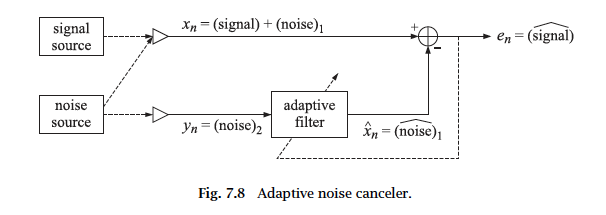In many applications a Wiener filter is used to decorrelate the desired signal from the input to the filter. The desired system output is then the error signal, which is decorrelated from the filter's input signal.
As an example, in adaptive noise cancellation we assume that we have some noise reference signal (e.g., noise picked up by a microphone). And we have a noisy signal which we want to clean up. The noise in the signal is assumed to be correlated with the noise reference. In terms of Wiener filtering, the noisy signal is the desired signal, the noise reference is the input to the filter, the filter output is hopefully a good estimate of the noise in the desired signal, and the error signal is the actual output of the noise canceler, which is a cleaner version of the originally noisy signal. The figure below shows the set-up (from S.J.Orfanidis: Optimum Signal Processing):

There are many other applications of (adaptive) Wiener filters, such as adaptive equalizers in communication systems (see this answer), and echo cancelation (see this answer).
In sum, the "desired signal" is often a signal contaminated with noise or interference, and the output of the Wiener filter is an estimate of that noise or interference, which is subtracted from the "desired signal". This is possible if at the input of the filter there is some reference of the contaminating signal. The "error signal" is then the actually desired output, which is the noisy "desired signal" minus the noise-estimate at the output of the filter.

